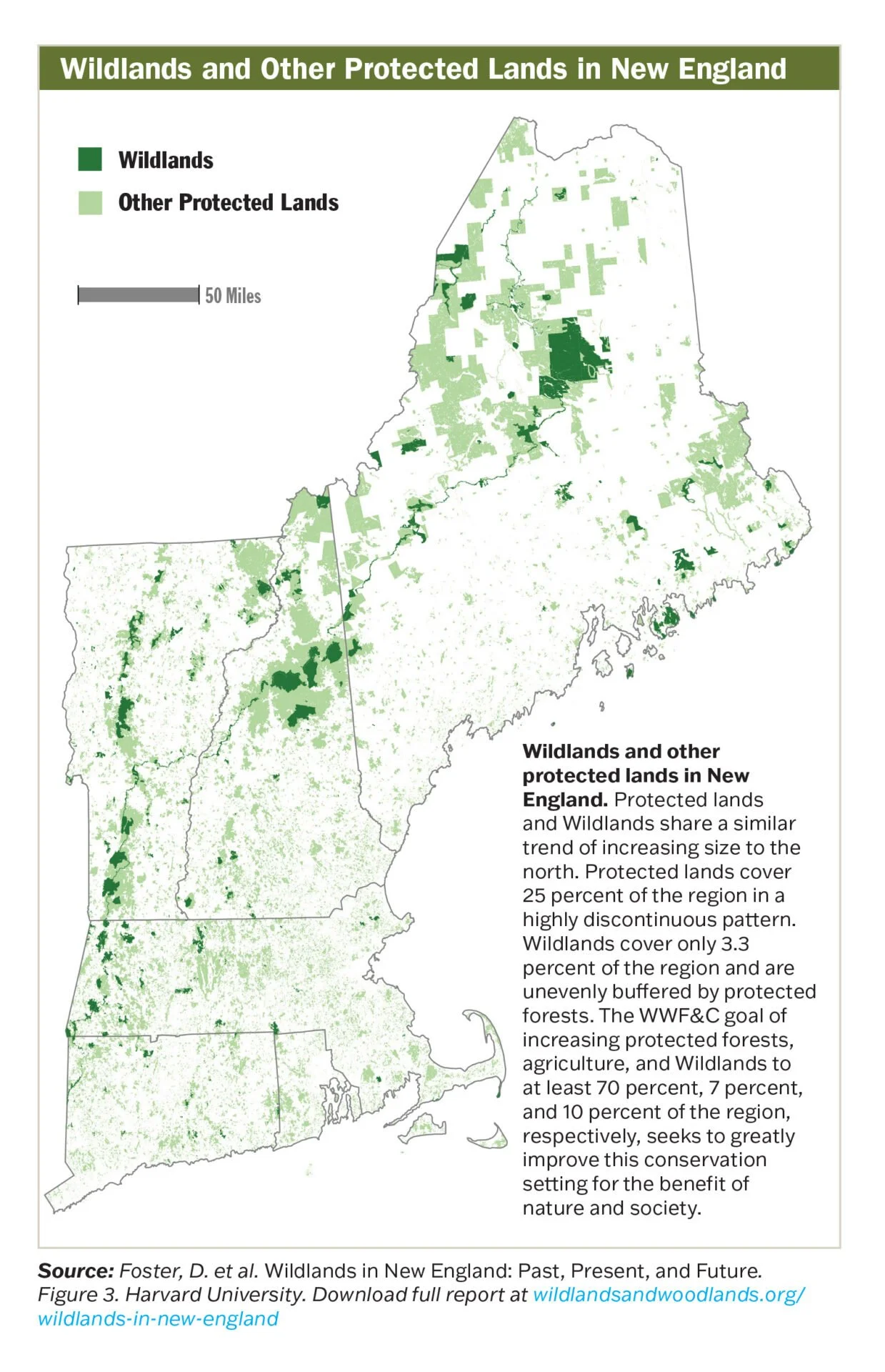Study says New England needs to protect much more wildlands
Excerpted from ecoRI News by Rob Smith
PETERSHAM, Mass. (home of Harvard University’s research forest)
“New England isn’t conserving enough wildlands to mitigate climate change or meet conservation goals.
“That’s according to a new study released late last month by Wildlands, Woodlands, Farmlands and Communities (WWF&C), a coalition group of conservation organizations, educational institutions, local governments and private nonprofits.
“The first-of-its-kind analysis, performed jointly by (the} Harvard Forest of Harvard University, the Northeast Wilderness Trust and Highstead Foundation, examined how much wildlands — tracts of land where the management policy is to leave nature ‘alone’ and allow natural processes to prevail without human interference — are preserved across the region, and the answer is: not much.
“‘The wild condition of the land derives not from the land’s history, but from its freedom to operate untrammeled, today and in the future,’ wrote the study’s authors.
“The study lays out three criteria for land to meet its wildlands definition: the land must have a deliberate wildland purpose; it must be allowed to mature freely under prevailing environmental conditions with minimal human intervention; and it must be protected in perpetuity.
“The key factor in wildlands is time. In New England, where much of the land has been developed and used, wildlands are more likely to develop via natural rewilding, an ecological restoration practice that aims at reducing the influence of humans on ecosystems. Wildlands are more likely to look like recently clear-cut areas or former pastures than old growth forest.
“Only 1.3 million acres, around 3.3% of New England’s total land area, protects wildlands across 426 individual properties, with much of it limited to the remote and rural areas of the region, a band of land that stretches from northwestern Connecticut to Baxter State Park in Maine. Meanwhile WWF&C has set a goal of preserving 10% of the region as wildlands.’’
Diorama at the The Fisher Museum at the Harvard Forest, which offers exhibits on current research as well as 23 dioramas portraying the history, conservation and management of New England woodlands.

